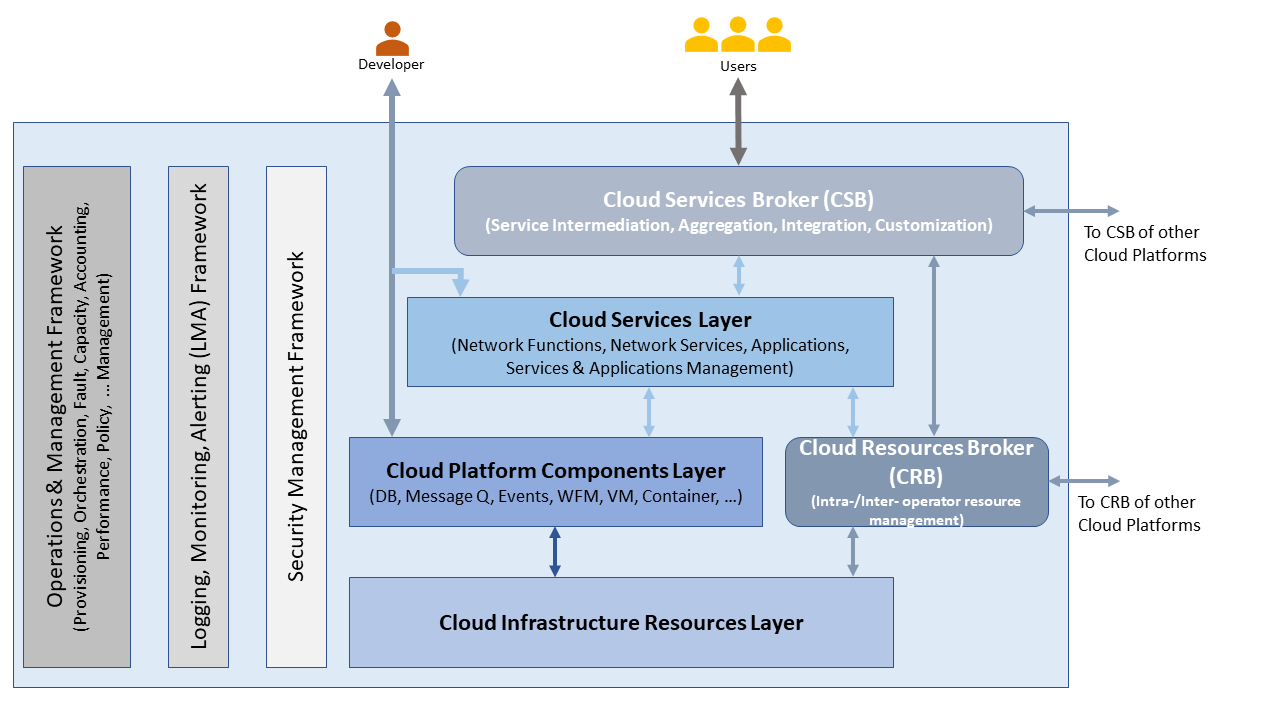...
a collection of cooperating, interoperable autonomous component clouds
- the component clouds perform their local operations (internal requests) while also participating in the federation and responding to other component clouds (external requests)
- the component clouds are autonomous in terms of, for example, execution autonomy
- execution autonomy is the ability of a component cloud to decide the order in which internal and external requests are performed
- the component clouds are loosely coupled where no control is imposed by some central component of the federated system
- the component clouds are likely to differ in, for example, infrastructure resources and their cloud platform software
- workloads may be distributed on single or multiple clouds, where the clouds may be colocated or geographically distributed
- component clouds only surface NBIs (Please note that VMware deployed in a private and a public cloud can be treated as a single cloud instance)
In this section we will further explore the characteristics of the federated cloud, architecture and architecture building blocks that constitute the federated cloud. For example, a Telco Cloud that consists of 4 sub-clouds: Private on prem, Cloud Vendor provided on prem, Private outsourced (Commercial Cloud Provider such as an HCP), and Public outsourced (see diagram below). Such an implementation of a Telco Cloud allows for mix'n'match of price points, flexibility in market positioning and time to market, capacity with the objective of attaining near "unlimited" capacity, scaling within a sub-cloud or through bursting across sub-clouds, access to "local" capacity near user base, and access to specialised services.
...
| Type | System Developer | System Maintenance | System Operated & Managed by | Location where Deployed | Primary Resource Consumption Models |
|---|---|---|---|---|---|
| Private (Internal Users) | Open Source | Self/Vendor | Self/Vendor | On Prem | Reserved, Dedicated |
| Private | Vendor | HCP* | Self/Vendor | Self/Vendor | On Prem | Reserved, Dedicated |
| Public | Vendor | HCP | Self/Vendor | Self/Vendor | On Prem | Reserved, On Demand |
| Private | HCP | Vendor | Vendor | Vendor Locations | Reserved, Dedicated |
| Public (All Users) | HCP | Vendor | Vendor | Vendor Locations | On Demand, Reserved |
*HCP - Hyperscaler Cloud Provider
- Each Telco Cloud consists of multiple interconnected Regions
- A Telco Cloud Region may connect to multiple regions of another Telco Cloud (large capacity networks)
- A Telco Cloud also consists of interconnected local/metro sites (multiple possible scenarios)
- A Telco Cloud's local site may connect to multiple Regions within that Telco Cloud or another Telco Cloud
- A Telco Cloud also consists of a large number of interconnected edge nodes
- Edge nodes may be impermanent
- A Telco Cloud's Edge node may connect to multiple local sites within that Telco Cloud or another Telco Cloud; an Edge node may rarely connect to a Telco Cloud Region
...
The Cloud Services and the Cloud Resources Brokers provide value-added services in addition to the fundamental capabilities like service and resource discovery. These Brokers are critical for a multi-cloud environment to function and utilise cloud specific plugins to perform the necessary activities. These Brokers can, for example, provision and manage environments with resources and services for Machine Learning (ML) services, Augmented/Virtual Reality, or specific industries.
Note: The functions shown on the left are not intended to represent that there is a single, say, integrated security framework across the layers
Glossary
PowerPoint File:
| View file | ||||
|---|---|---|---|---|
|
